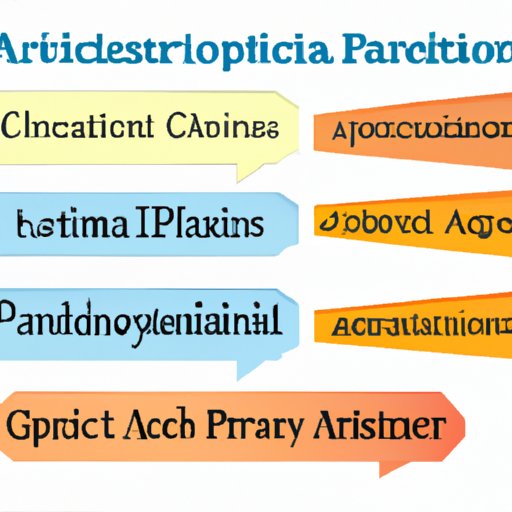Introduction
As a writer, it’s essential to give credit to the sources you use in your work. That’s where APA citation comes in. APA stands for American Psychological Association, and it’s a widely accepted citation style used in social science and other academic disciplines. It helps ensure that your work is accurate, credible, and reliable. In this article, we’ll cover five different topics related to APA citation to help you better understand how to cite in APA format.
A Beginner’s Guide to APA Citation: Everything You Need to Know
The two most commonly used methods for APA citation are in-text citation and reference lists. It’s important to know the difference between these two methods and how to use them properly:
– In-text citation: When you paraphrase or quote someone else’s work within your own, you need to cite that source. The in-text citation consists of the author’s name, the date of publication, and the page number(s) where the information was found. For example: (Johnson, 2019, p. 25).
– Reference lists: At the end of your work, you need to provide a detailed list of all the sources you used in creating your work. This includes the author’s name, the date of publication, the title of the work, and publication information (e.g., journal or book title and publisher). The reference list should be formatted according to APA guidelines.
It’s essential to format your citations correctly. Here are some tips to help you do it right:
– Use a consistent style throughout your work.
– Make sure your references list is in alphabetical order.
– Double-check the formatting of your citations.
5 Common APA Citation Mistakes and How to Avoid Them
Even though APA citation can be straightforward, mistakes can still happen. Here are five common APA citation mistakes and how to avoid them:
1. Forgetting to include page numbers in in-text citations.
2. Failing to include all necessary information in the reference list.
3. Misformatting in-text citations, such as incorrect spacing, punctuation, or order.
4. Plagiarism: failing to cite your sources correctly or not citing them at all.
5. Using outdated or incorrect citation rules.
The best way to avoid these mistakes is to pay attention to detail and to carefully review your work for accuracy.
APA Citation Made Easy with These Simple Tips
Citing your sources doesn’t have to be a daunting task. Consider these simple tips to make it easier:
– Use citation generators, such as EasyBib, to help you create citations quickly and accurately.
– Double-check your sources to ensure that you’re citing the correct information.
– Format your citations as you go, so you don’t fall behind.
– Use online APA citation resources, such as Purdue OWL, to answer any questions you may have.
Why APA Citation Matters and How to Do It Right
Proper citation is crucial in academic writing for several reasons:
– It gives credit to the original source of information: Citing your sources accurately helps you avoid plagiarism and gives proper credit to the original author or researcher.
– It distinguishes between different sources: APA citation helps readers differentiate between different sources, making it easier to understand where certain information came from.
Here is a step-by-step guide for citing in APA format:
1. Identify the type of source you’re using (e.g., book, website, journal article).
2. Gather all the necessary information about the source (e.g., author’s name, date of publication, title of work, publisher, page numbers).
3. Format your in-text citation accurately, using the author’s name, date of publication, and page numbers.
4. Format your reference list according to APA guidelines.
Mastering APA Citation: Tips and Tricks From Experts
We interviewed experts in the field of academic writing and citation to get their best tips and tricks for citing in APA format. Here are some of their suggestions:
– Always double-check your work, even if you’re using a citation generator.
– Use online resources to help you better understand APA citation.
– Don’t be afraid to ask for help or clarification from your professor or peers.
Conclusion
Proper citation is an essential aspect of academic writing. In this article, we’ve covered everything from understanding in-text citations and reference lists to common mistakes you should avoid. By applying these tips and tricks, you’ll be able to create accurate, credible, and reliable work while becoming a better writer. Remember to always double-check your work and don’t hesitate to consult resources or seek help when you need it.
